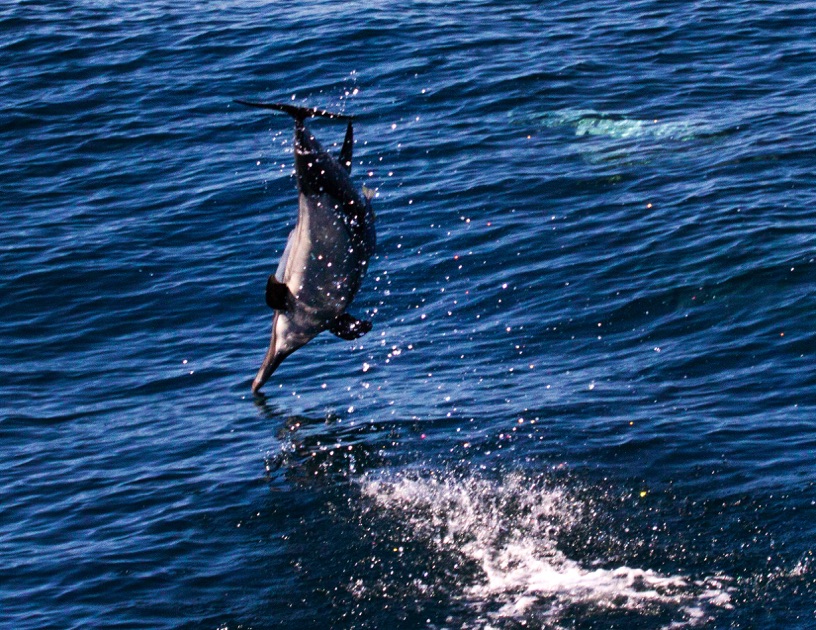

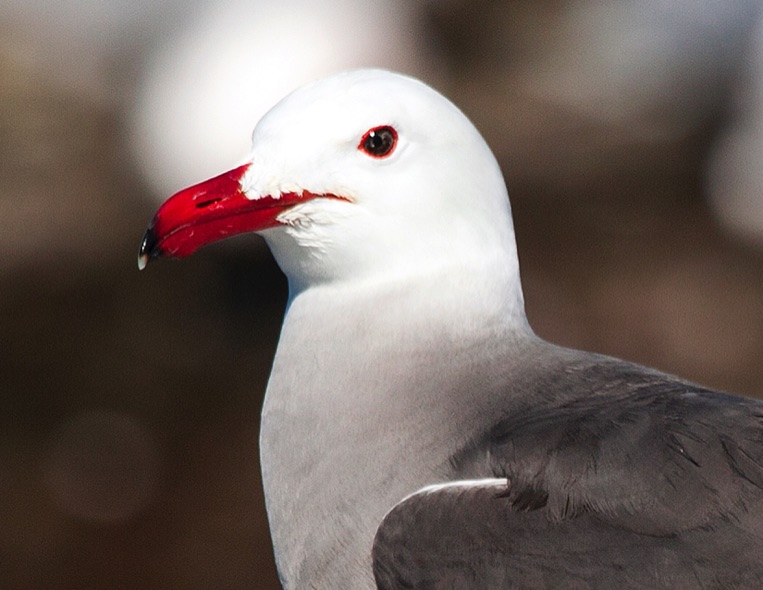
Baja California Mexico is the second-longest peninsula on earth. Longer north to south than the State of California. It is bordered by the Pacific Ocean and the Sea of Cortez also called the Gulf of California.
Baja has a population of about 3 million people but over 75% of the population live in the far northern area close to the U.S. border. Except for the resort areas at the tip of Baja, the peninsula is very sparsely populated and rugged.
The Baja peninsula is about 800 miles long and averages 75 miles wide, the narrowest point at just 26 miles wide. A mountainous area with peaks up to 10,000 feet, there are also hot desert landscapes.




Killdeer
White Faced Ibis
Greater Yellowleg
Gila Woodpecker





Greb

Brown Pelican
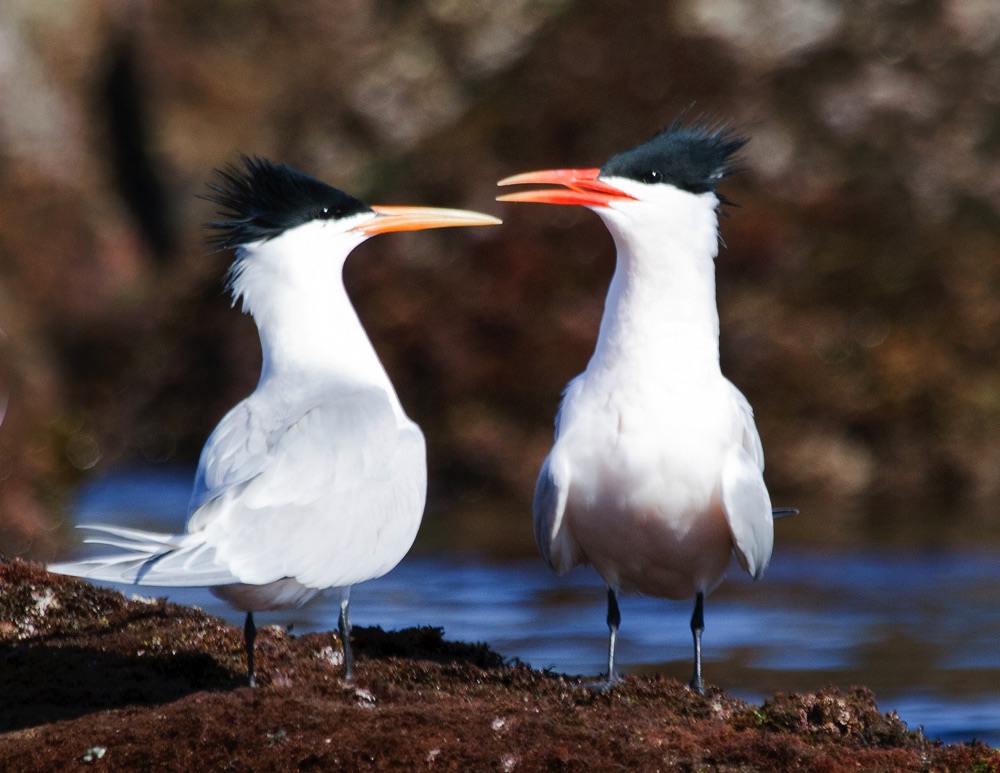
Elegant Terns

American Coots

Female Hooded Oriole
Heerman's Gull

Blue-footed Booby

Red-billed Tropic Bird

Osprey

Tricolor Heron fishing



Immature Frigate Bird

Frigate Birds with Chicks

Male Frigate Bird in display

Egret

Blue-winged Teal

Northern Shoveler





Pelagic Crabs

Juvenile Yellow-footed Gulls with Crab

Pelagic Crabs Washed Up On Beach
Yellow-footed Gulls Feeding on Pelagic Crabs
Yellow-footed Gulls, Immature and Adult
Birds of Baja and the Sea of Cortez

Sally Lightfoot Crab
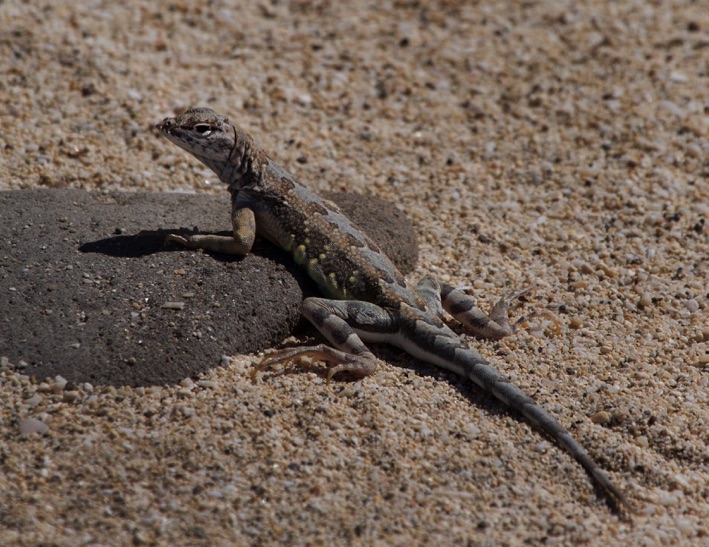
Baja Brush Lizard

Uta Squamata Lizard

Spiny-tailed Iguana

Leopard Lizard

Desert Spiny Lizard

Pinto Chuckwalla




Common Chuckwallas



Rattleless
Rattle Snake

Reptiles of Baja and the Sea of Cortez
Baja and the Sea of Cortez
It's one thing to go whale watching, quite another to go
"whale touching".
Cheryl actually
kissed a whale...
and loved it.
San Ignacio Lagoon is a Gray Whale nursery, and home to the "friendly whales".
José Francisco Mayoral, a fisherman from San Ignacio, was the first person known to have experienced a close encounter with a friendly gray whale back in 1972, about that time it was declared a whale sanctuary.
These Gray Whales seek out human contact. The adult female, will nudge her calf up to boats called Pangas.

Brown Booby in Flight


Brant's Commorants
Cheryl petting a juvenile Gray Whale.
Gray Whales have two blow holes or nostrils and a heart shaped blow.
Over the years
researchers and visitors
have enjoyed the "friendlies".
The number of boats and the time spent in the sanctuary is carefully controlled.



Gray whales carry whale lice
and barnacles.
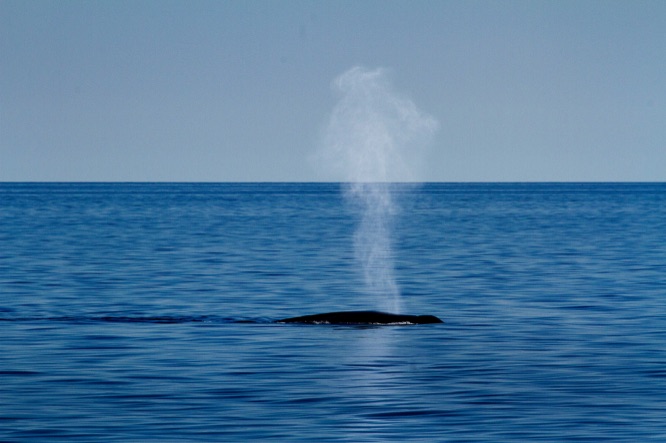
A Blue Whale Blow
A Spy Hopping Humpback Whale

Humpback Whale Breech
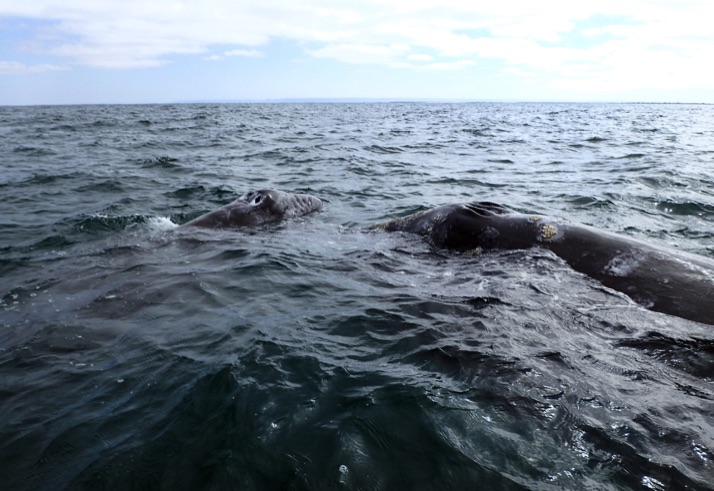
Gray Whale Adult Female with young. She will have the calf swim against the currents to ready him for the
long migration north.
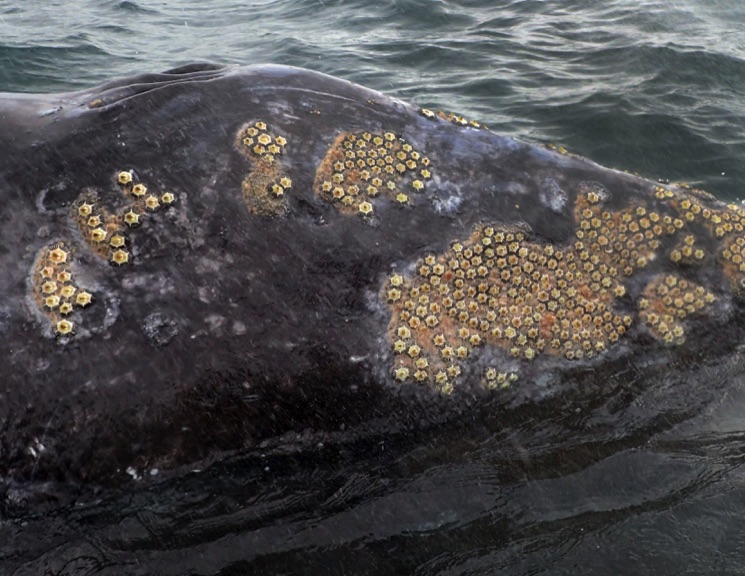
A Gray Whale can have up to a ton of barnacles on it.
Which is not much for its
80,000 pound body.

Whale
Lice

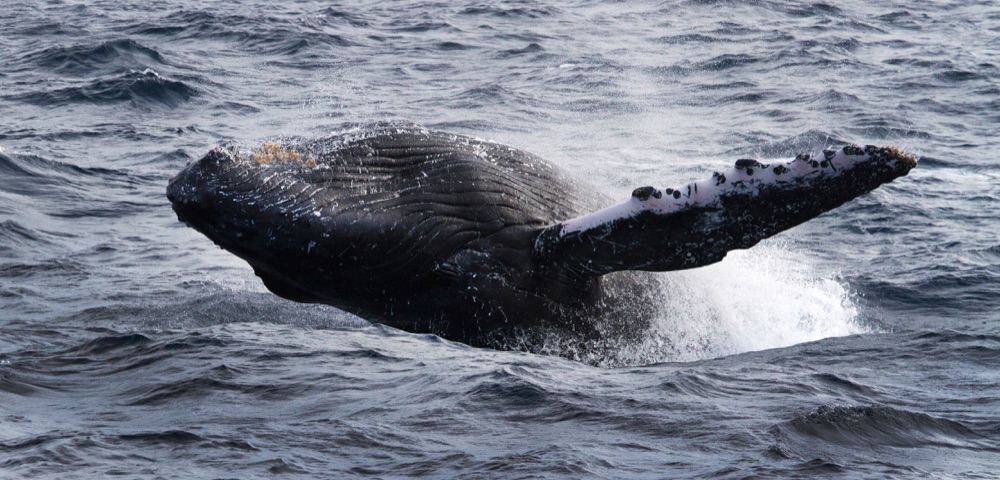
Gray Whale
Fluke


Long Beaked Dolphins of the Sea of Cortez
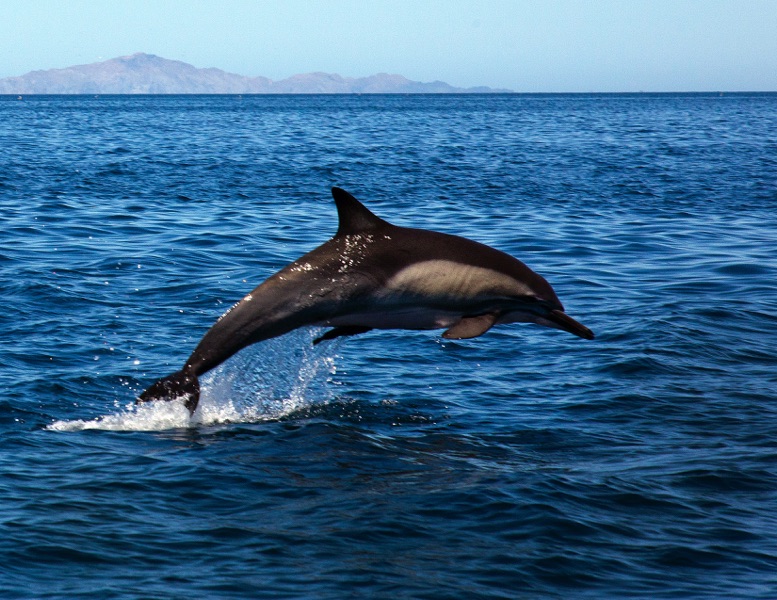



Long-beaked Dolphins with Young Calves


Bow riding Dolphins





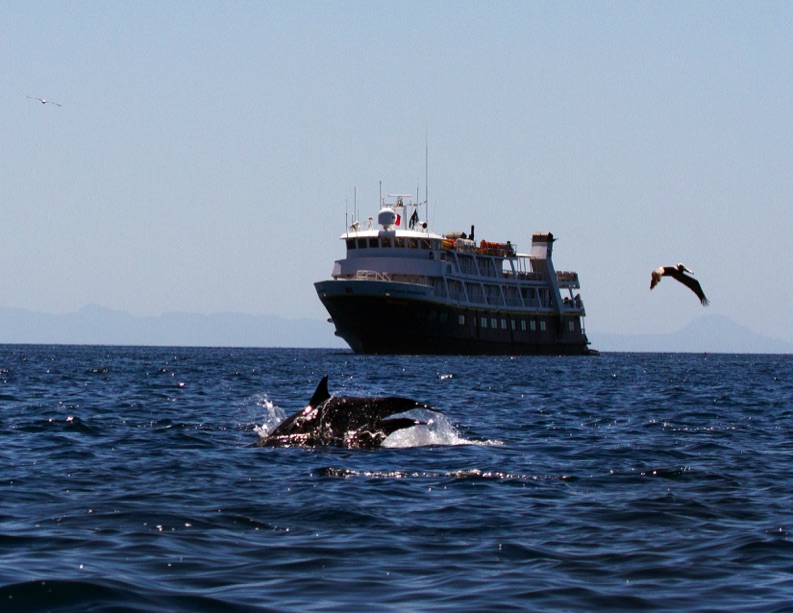


Dolphins with Remoras, a sucker fish. They have a special fin with tiny bards that acts as a suction cup, creating a vaccum, allowing it to attach to larger marine animals.
The gripping disk does not harm the host.
Cheryl's New Friend
Least Sandpipers
Point of reference:
a male Gray Whale's penis
is 3 feet in diameter and
6 to 8 feet long.
His testes are the
size of Volkswagens.
Born in the lagoon,
the Gray Whale Calf weighs about 1,500 pounds, up to 1 ton at birth, and is about 15 feet in length.
The calf suckels 53%fat milk, 50 gallons each day, that is injected
from the mammary slit
into the infant. The calf doubles it's weight in
about 2 months.
They are weaned at
7 to 9 months, and stay with their mom
for about a year.
Barnacles seem to neither harm nor
benefit their host.
The Blue Whale is the largest animal
ever known to to have lived on earth,
weighing up to 200 tons ( 400,00 pounds)
with a length of up to 100 feet long.
and a life span of 80 to 90 years.
Gray Whales have the longest migration of any mammal on earth.
Every year they swim more than 10,000 miles roundtrip,
between nursery lagoons in Mexico to feeding grounds in the Arctic,
averaging 110 to 120 miles/day
The blow holes are actually the whale's nostril.
They take a large beath and can dive down 500 feet and stay down for 30 minutes.
The spout is exhalation of the now hot inhaled air, which on surfacing, condenses on contact with
the cool air as a mist.
Its tongue can weigh as much as as an elephant,
and its heart can weigh as much an automobile.
Flying Mobula Ray
The underside of a Ray.
The mouth is lined with "teeth" to crush snails and crustacean's,
Two nostril-like features help in finding food.

Sea Lions

Nursing Sea Lion
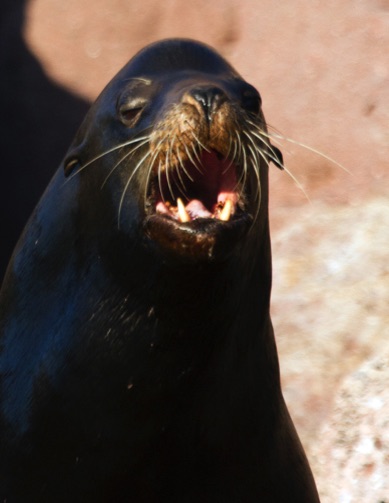


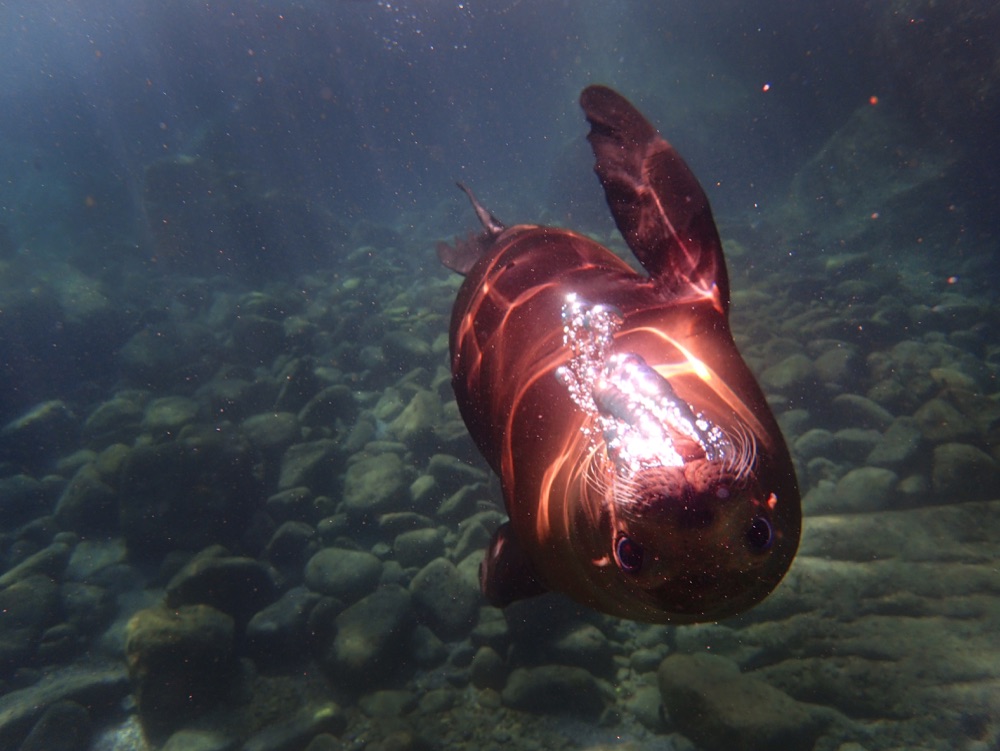







The difference between seals and seal lions. Sea lions have visible ear flaps and can "walk'on land. Seals have to wriggle on their bellies and have no visible
ear flaps.
A warning: If a whale blows when next to the boat, you and your camera get wet. The blow has a bit of a sufur smell.
The National Geographic ship,
Sea Bird, our home for two weeks.
Great crew, guides and food!
A small ship expedition, 62 souls
The southern tip of the Baja Peninsula.
This formation is familar to many.
The live span of a Gray Whale is not known for certain, thought to be
50 to 70 years
Black-vented
Scooter duck
Unidentified
Sea Creature

A group of dolphins is called a pod.
It was fun to swim with the
sea lions. Very playful and curious creatures.
Gray, Blue, and Humpback whales are baleen whales. Grays will scrape across the ocean bottom, sucking up sediment and straining the water though the baleen plates to filter out food from the water,
The baleen plates are made of keratin and are bristle like. (Our finger and toe nails are made of keratin.)
Blue Whales are among the loudest animals on earth.
They can hear each other up to 1000 miles away.
At times they can eat up to
4 tons of krill each day
The newborn calf weighs about 22 pounds and is about 3 feet in length. Born after a gestation of 10 to 11 month.
Long-beaked whales have a life span up to 40 years.
As mammals, Dolphins and Whales are warm blooded, nourish their young with milk secreted by mammary glands, and at some point possess hair.
2017